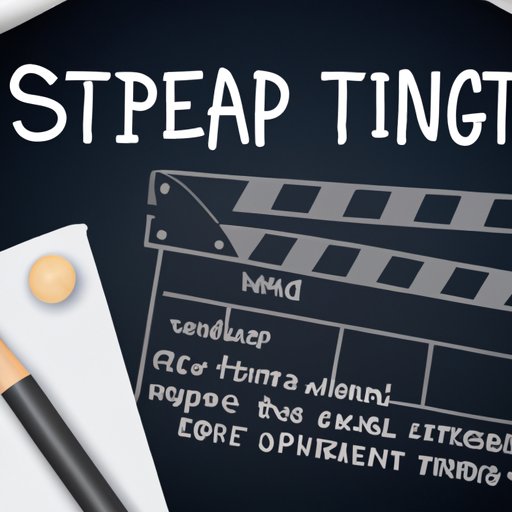How to Write a Screenplay: A Comprehensive Guide
Are you a budding screenwriter with a great idea for a movie, but you aren’t quite sure how to turn it into a screenplay? Look no further! In this step-by-step guide, we will walk you through the entire screenwriting process and provide tips and tricks to help you create a compelling script.
A Step-by-Step Guide to Writing a Screenplay
The first step in writing a screenplay is to generate an idea. This could be a concept for a character, an interesting story, or even a unique setting. Once you have a starting point, it’s time to develop your idea into a compelling storyline. This involves considering key elements such as character development, plot structure, dialogue, and theme.
It’s important to create a solid outline before moving onto the actual writing phase. This will help you identify any potential plot holes, ensure that your characters are fully developed, and help give structure to your story. Once you have a solid outline, it’s time to start writing!
Remember, the actual writing is just the beginning. It’s important to go back and re-read your work, making edits where necessary. The rewriting process is essential to creating a successful screenplay, so be prepared to go through several drafts before landing on the final version.
Building on Examples of Successful Screenplays
One of the best ways to learn how to write a great screenplay is to study successful examples. Some of the most well-known screenplays of all time, such as The Godfather, Jaws, and The Social Network, offer valuable insights into storytelling techniques and key elements of screenplay writing.
To craft a compelling script, it’s important to analyze character development, plot structure, dialogue, and theme. For example, in The Godfather, character development is key to driving the story forward. Likewise, in Jaws, the plot is structured around a central conflict that builds tension throughout the film.
It’s also important to consider genre-specific elements when writing your screenplay. Whether you’re writing a romance, horror, or action movie, there are certain elements that audiences expect to see. By incorporating these elements into your script, you can engage your audience and keep them invested in your story.
Tips and Tricks for Writing a Great Screenplay
Writing a screenplay is no easy feat, but there are certain tips and tricks that can help you craft a successful script. For example, it’s important to captivate your audience from the very beginning, so consider starting your script with a bang. Additionally, tightening up your dialogue, working on character arcs, and conducting research can all help elevate your script to the next level.
It’s also important to take breaks and keep a fresh perspective throughout the writing process. Don’t be afraid to step away from your script for a few days, or even a week, before coming back to it. Sometimes a fresh set of eyes can make all the difference!
The Business of Screenwriting
Once you’ve completed your screenplay, it’s time to get it into the right hands. There are several ways to do this, including entering writing contests, attending pitch events, and submitting your script to agents or managers.
It’s important to understand the business side of screenwriting, as it can be just as important as the writing itself. Building relationships within the industry and networking are both essential to getting your script noticed.
Collaboration: Tips and Strategies for Working with Others
In many cases, screenwriting involves collaboration with other creatives. Whether you’re working with a writing partner, a director, or a producer, it’s important to find the right fit and establish clear communication from the outset.
There are several approaches to collaboration, including dividing up tasks and brainstorming together. It’s important to find a strategy that works for you and your collaborator, and to be open to feedback and constructive criticism throughout the process.
Conclusion
In conclusion, writing a screenplay is no easy task, but it’s certainly an attainable one. By following our step-by-step guide, analyzing successful examples, and incorporating tips and tricks, you can create a compelling script that catches the attention of industry professionals.
While it can be intimidating to put your work out there, don’t let fear hold you back. Remember, every successful screenwriter started somewhere.
